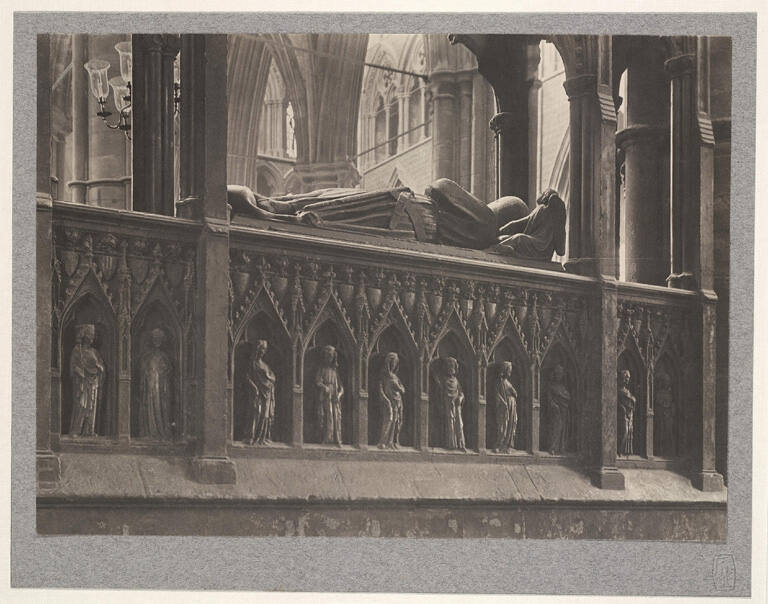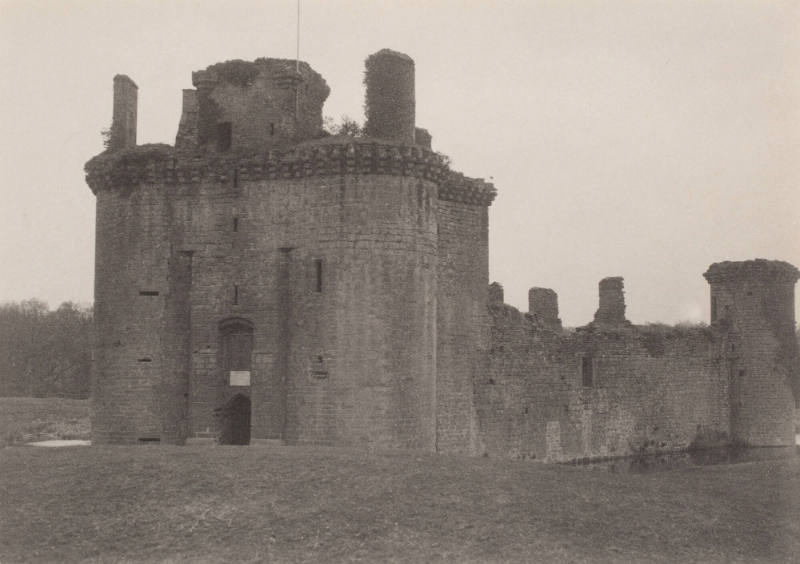
Object Details
Artist
Frederick Henry Evans
Date
1906
Medium
Platinum print
Dimensions
Image: 6 3/4 × 9 1/4 inches (17.1 × 23.5 cm)
Mount (1): 7 13/16 × 9 15/16 inches (19.8 × 25.2 cm)
Mount (2): 20 5/8 × 13 15/16 inches (52.4 × 35.4 cm)
Mat: 28 × 22 inches (71.1 × 55.9 cm)
Credit Line
Gift, by exchange, of Arthur Penn, Class of 1956, and Marilyn Penn; Christopher Elliman; David Elliman; and Andrea Branch
Object
Number
91.029.003
Frederick Henry Evans spent much of his life involved in the intellectual activity of his native Lon(…)
Frederick Henry Evans spent much of his life involved in the intellectual activity of his native London. First employed as a bank clerk, Evans opened a bookstore on Queen Street, Cheapside, in the 1880s which was frequented by such artists and literati as Aubrey Beardsley and George Bernard Shaw. When he retired from the book business, his friend, George Smith, proprietor of the Sciopticon Company, convinced him to try his hand at photography; they made a series of slides of minute objects, such as shells and parts of insects. Evans portrayed his friends and delighted in the abstract designs he saw through the microscope, but his forte was architectural photography, particularly tonally elegant, but unmanipulated pictures of chateaux and cathedrals. Commissioned by Country Life to create a photographic record of Westminster Abbey, our image portrays the tomb of Edmund of Lancaster (also known as Edmund Crouchback), who died at Bayonne in 1296 during the siege of Bordeaux. Taken from a low vantage point as though to portray the monument from the point of view of the pilgrims who would have knelt before it, Evans captures the delicate tonalities of the ancient stone. The triple canopy of the Crouchback tomb rises over the finely sculpted effigy of the mail-clad earl. Stone portraits of the deceased decorate the canopy overhead while an angel sits gently at his shoulder. Ten niches on either side of the tomb contain “weepers,” alternately male and female, each striking a faintly Gothic pose. (From “A Handbook of the Collection: Herbert F. Johnson Museum of Art,” 1998)












